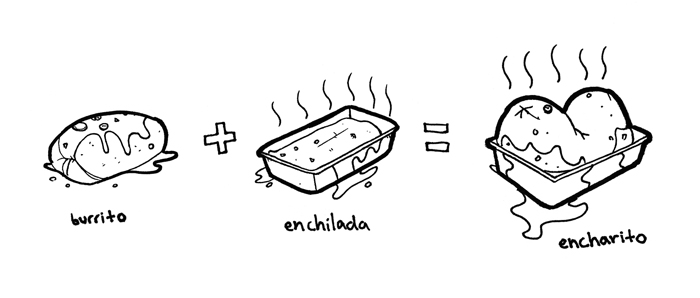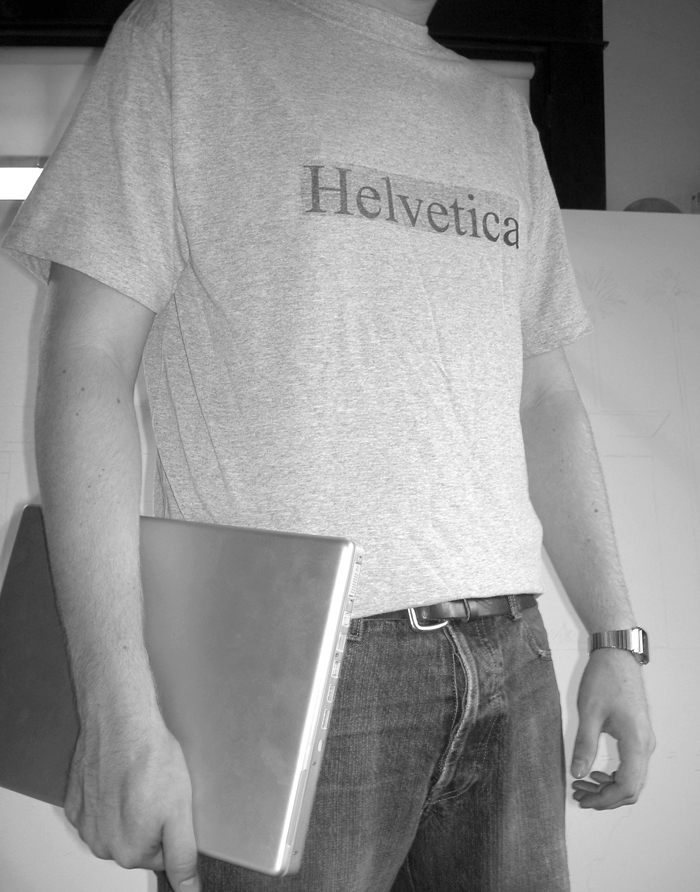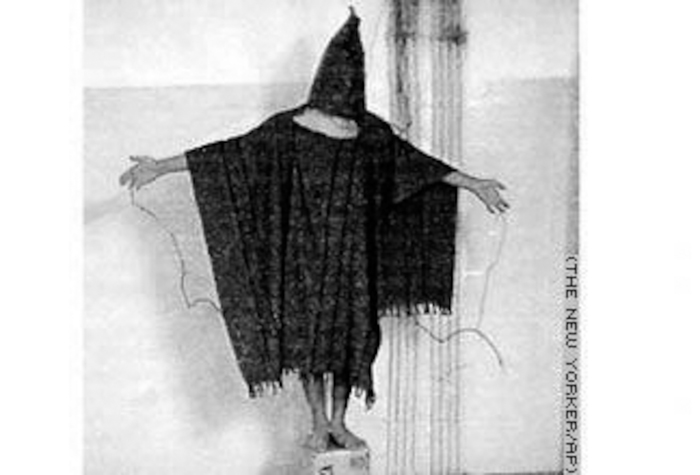
Ross Evertson, Encharito, 2004
New Words and Neo Dada
With the perpetual proliferation of ever-new technology, there is typically a concordant rise in new language to accompany it. Some of my favorite additions to the lexicon of today’s technocrats are: googlebombing, texting, blog and blogging, and hacktivism. Sometimes words are borrowed from one camp of culture, and re-assigned to a new meaning in another camp. For example, an “artifact” when found in cyberspace is like a little ghost that remains and haunts your image, application, or file, as a result of lossy compression. An artifact in a computer is “old” (in computer time, that is), in that it is usually left over from the operation that you performed one second ago. But, unlike the artistic or archeological use of the same term, a computer artifact is certainly not precious. An artifact may also appear in the middle of a video event. A video event, in editing and imaging software, is a small clip of video, either a scene or a small montage. As a video artist, it makes me happy to think of video as an event, as though it is a little digital happening.
Many of the new words added to the dictionary last year were truly postmodern. Some were cognates appropriated from other languages while others were portmanteau words that fused two existing words to create new meanings. See if you can guess the root words for these recent dictionary additions: culterati, pharming, cosmeceutical, hacktivism, affluential.1 I have written a little story with more of my favorite new words, which you can peruse in the footnotes.2
The cyber world is the source of new words in other ways too. I am frequently amused by the linguistic phenomena that emerge out of the chaos of ones and zeros swarming around in my CPU. Even better than Dictionary.com are the parasitic keywords that tag along with the junk e-mails to thwart spam filters. Recently, I was offered a low rate loan on my (nonexistent) mortgage. The e-mail read:
We are glad to confirm that your application is accepted and you can get as low as 3% rate. Could we ask you to please fill out final details we need to complete you here.
Both the grammar and the Jerry Maguire “you complete me” reference indicated trouble. The paragraph that followed was a dumb- founding string of words with no possibly decipherable logic. Here is an excerpt:
Gaussian booze livestock…bulldog pun- ster porpoise radiotherapy surpass war- like weaponry clubhouse contestant occurrent England blanket wreckage banshee foolproof…bilabial camouflage antipodean shook allotropic tarry gurkha gorge…
Talk about dada poetry. It was neo-dada, really. Neo-dada poetry can also be generated by sending text back and forth through the translation programs in Sherlock.
One of Duchamp’s texticles, originally in French is:
Le différence entre un bébé qui téte et un premier prix d’horticulture est que le premier est un souffleur de chair chaude at le second un choufleur de serre chaude.3
After cycling it through the English-French- English translation options 4 or 5 times, the result is:
The difference between a baby that the téte and a first price of the horticulture is that the first is a ventilator of hot flesh at the second by chouflor of hot hot hot greenhouse.
Fusion phonetics
There are many interesting cultural by-products of the multi-culti melting pot that simmers at the center of our global village. One of them is the bastardization of foreign words. Since our president is particularly bad at pronouncing them, and since we have so many cultures here in the US, some funny things happen with foreign words. Falsely implying cultural awareness, and correctly employing good marketing tactics, exotic or foreign sounding words are often used in place of actual words. Fast food restaurants are a hotbed of linguistic frivolity. Prime examples lie in Taco Bell’s Encharito, or Jack in the Box’s Pannido.
The nonsensical term Häagen Dazs (more neo-dada) set the stage for the sort of phonemic philandering that Ikea excels at today. Ikea’s product names are sometimes actual words and sometimes just strings of ostensibly Swedish sounding syllables. The strategy in the case of the latter, I believe, is that the unfamiliar sequence of consonants and vowels (usually a’s and o’s) is often so intimidating that the buyer will simply accept them as some kooky Swedish design term, and will not try to sound them out in his or her head. (This brings to mind memories of the Swedish chef on Sesame Street, or Andy Kaufman’s character Latka on Taxi). When these words are sounded out, they are gen- erally phonetic cognates of familiar terms.
I recently bought a rolling chair from Ikea, the footing options of which were: punkt, paragraf, and komma. Wow, a grammar chair. I wondered how this might be representative of some Swedish (etymo)logic that related to work chairs (for they clearly distinguish between work chairs and leisure chairs in the catalog). Well, I was planning on using it at my computer, and that means I’d be writing a lot. I looked up the words for clarification: punkt means point, komma means point or comma, paragraf means section. They are real Swedish words, but with a playful assignment in the world of furniture.
My favorite Ikeaism, however, was the title of the alarm clock that I also bought. The model name was slabang. Dictionary research indicated that it was a made up term with no discernible semantic implications. I deduced that it was an onomatopoeic term for the noise that my arm makes when sliding across the bed, then slamming the alarm off. Beep beep beep. Beep beep beep. SLABANG!
Micol’s new words
Following the Ikean model, I have been inspired to introduce my own new words. In honor of the euphemistic drug names that generally target depression or erectile dysfunction, I would like to propose Uplift as the brand name for a new drug that would address both problems. Faux naïve is a term that has been applied to the neo-art-brut tendencies in sculpture and painting of the last decade or so. But, it seems to me that faux naïve is too oxymoronic. Instead, I would like to suggest paesthetic, which is a conflation of my previous nomenclature for this style: “pathetic aesthetic.” Lastly, so that we may further mix signals and metaphors, signs and signifiers, I have scribed the signaphor.
Transgrammatical
There is slippage of meaning in parts of speech as well. This happens the most often with verbs and nouns, though it’s been known to happen with adjectives and adverbs too. The most visible example came with Apple’s (in)famous Think Different campaign (1999), which repositioned differently — the adverb — as different, the adjective. The most abundant source of reassigning parts of speech is coming from the media. From TV’s Extreme Makeover, we have The Reveal at the end of the show, when the contestant’s new look is exposed. The Reveal transforms a verb into a noun, an event. With similar efficiency personal hygiene products have now been grouped into one catch-all category – “product,” sans article. “Do you want some product for your new cut?” the stylist asked me at the end of my session.
Yet another complication of Saussure’s sign can be found in movie titles over the last few years. In a trend that originated in calculator rebuses in the ‘70s, numbers are being used as letters. Initially it was a phonetic replacement, as in license plate abbreviations: C U L8R! U R 2 GR8! Occasionally it was a visual assimilation, using 3’s as E’s for example, or upside down 7’s as L’s. Now, however, numbers seem to replace letters with no real logical substitution. There is often no apparent correlation to letter shape or sound: as in Se7en, Thir13een Ghosts, Murd3r 8y Num8ers, or 5ive Days Till Midnight. Swapping numbers for letters is no longer a space-saver, but rather a gesture of graphic ingenuity.

Micol Hebron, Helvetic, 2004
I recently heard of a semiotic joke that perfectly exemplifies the discord between what we see and what is represented. The joke took the form of a T-shirt worn by self-proclaimed computer (or typography)nerds. The shirt simply says:4
Helvetica
Politics
Language has recently become particularly charged, as it tends to do in the months preceding a presidential campaign. Doublespeak is ubiquitous and we have certainly heard our share of dubyaspeak. In Dubya’s case the euphemisms are thinly veiled. There seems to be some debate over the true and legal meanings (not necessarily one and the same) of torture, abuse, and interrogation (interrorgation?). The use, either verbal or scripted, of the word terror, has been an emblematic signifier of our nation’s position with regard to Iraq. While WMD in application stands for “we Want those Mother-f**ckers Dead (for blowing up the twin towers),” Bush has finally taken to using language that acknowledges his well- known ulterior motive. After his speech at the Army War College on May 24th5 it took political analysts less than 24 hours to announce that Bush had used the term terrorist (or any of its derivatives: terrorism, terror) a total of 19 times, effectively admit- ting that the reason we were in Iraq was in fact for the terrorists…and not for the non- existent Weapons of Mass Destruction. When it comes to the Abu Ghraib prison abuse images, however, the word “torture” has been reassigned to mean “interrogation.” The word formerly known as “torture” will now be known as the sign:6

The Washington Post, March 2004, Associated Press
Donald Rumsfeld was right, in his evocation of Gertrude Stein, “there are known knowns… but there are also unknown unknowns.”7 We only know what we see, hear, and think. Or do we? Only a month after its release, literally hundreds of websites have posted theories about why the videotaped beheading of Nick Berg was allegedly faked. In other words, what you see really isn’t what you see. It seems that only 50 years later, we have returned to the Cold War era environment of paranoia and fear, of doubting and double meaning, of openly fearing otherness. It is no wonder the 1970s b-movie classic The Stepford Wives was recently remade.8 In our post-Prozac nation the cloned housewives in the Stepford Wives are tantamount to biological doubles- peak, now standing in not for feminist antitheses, but for a state of mind that might be desirable or, at the very least, familiar.
Postscript: In a follow up to the last Artspeak article (X-TRA, Vol. 6 no.4), I would like to thank Kristina Newhouse for directing me to the latest iteration of cornceptual at: http://www.cherrydelosreyes.com/future.html where there is information about the exhibition Cornceptual Popstraction: Chris Grant, Amir Fallah, Nathan Mabry, Antonio Puleo, Rob Thom (November 6 – December 12, 2004).
Micol Hebron is an artist and educator living in Los Angeles.
